Chicago Travel Guide
Most populous city in Illinois, and the third most populous city in the United States, and is one of the 40 largest urban areas in the world
Places to See in Chicago
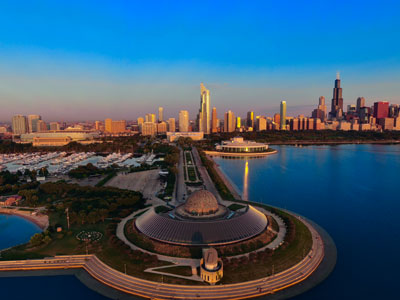
Moses8910, CC BY-SA 4.0, via Wikimedia Commons; Image Size Adjusted
Adler Planetarium
Museum dedicated to the study of astronomy and astrophysics, located on the shore of Lake Michigan in Chicago, and was the first planetarium in the United States
-400.jpg)
Edsel Little, CC BY-SA 2.0, via Wikimedia Commons; Image Size Adjusted
Alinea
Restaurant awarded three stars from the Michelin Guide and is the only Chicago restaurant to retain a three-star status, Michelin's highest accolade

Sir Mildred Pierce, CC BY 2.0, via Wikimedia Commons; Image Size Adjusted
Burnham Park
Park situated along 6 miles (9.7 km) of Lake Michigan shoreline, and connects Grant Park at 14th Street to Jackson Park
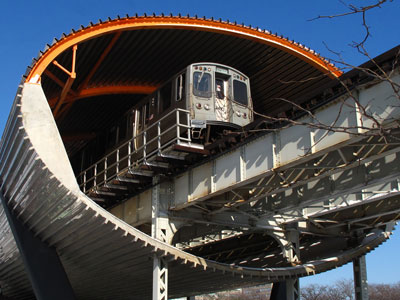
John Picken, CC BY 2.0, via Wikimedia Commons; Image Size Adjusted
Chicago L
The Chicago "L" (short for "elevated") is the rapid transit system serving the city of Chicago and some of its surrounding suburbs in Illinois
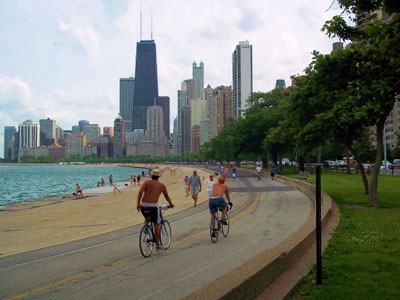
Alanscottwalker, CC BY-SA 3.0, via Wikimedia Commons; Image Size Adjusted
Chicago Lakefront Trail
18.5-mile-long partial shared use path located along the western shore of Lake Michigan in Chicago passes through and connects Chicago's four major lakefront parks
-400.jpg)
Ken Lund from Reno, Nevada, USA, CC BY-SA 2.0, via Wikimedia Commons; Image Size Adjusted
Chicago Loop
Second largest commercial business district in North America featuring many of Chicago's most famous attractions
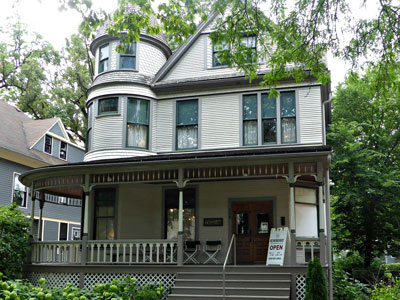
MauraWen, CC BY-SA 4.0, via Wikimedia Commons; Image Size Adjusted
Ernest Hemingway Birthplace
Historic home and museum in Oak Park, Illinois where American author Ernest Hemingway was born and is open for guided tours

David Wilson from Oak Park, Illinois, USA, CC BY 2.0, via Wikimedia Commons; Image Size Adjusted
Field Museum of Natural History
Popular natural-history museum due to its extensive scientific-specimen and artifact collections and is one of the largest such museums in the world
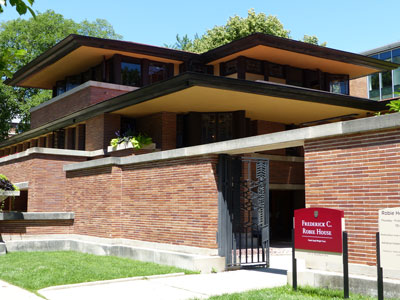
Stilfehler, CC BY-SA 4.0, via Wikimedia Commons; Image Size Adjusted
Frederick C Robie House
Building designed as a single family home by architect Frank Lloyd Wright and is renowned as the greatest example of Prairie School, the first architectural style considered uniquely American
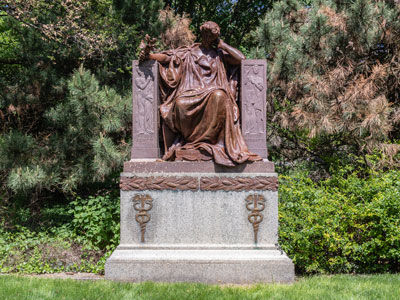
Daniel Chester French, CC BY-SA 4.0, via Wikimedia Commons; Image Size Adjusted
Graceland Cemetery
Large historic garden cemetery where among the cemetery's 121 acres are the burial sites of several well-known Chicagoans
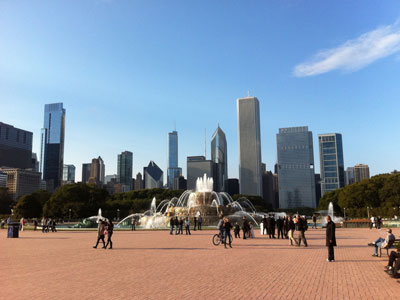
Adam sk, CC BY-SA 3.0, via Wikimedia Commons; Image Size Adjusted
Grant Park
Large urban park located within the city's central business district, featuring Millennium Park, Buckingham Fountain, the Art Institute of Chicago, and the Museum Campus
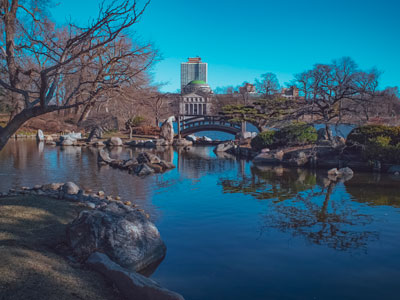
Michael Christensen, CC BY-SA 4.0, via Wikimedia Commons; Image Size Adjusted
Jackson Park
551.5-acre park located on the South Side of Chicago, is one of the largest and most historically significant parks in the city
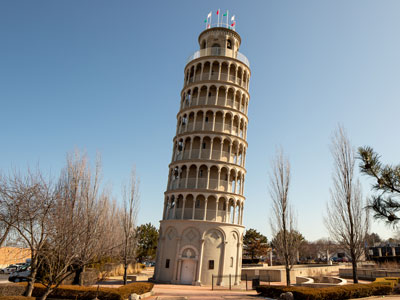
Paul R. Burley, CC BY-SA 4.0, via Wikimedia Commons; Image Size Adjusted
Leaning Tower of Niles
Replica of the Leaning Tower of Pisa
_4-1-22-400.jpg)
Sea Cow, CC BY-SA 4.0, via Wikimedia Commons; Image Size Adjusted
Lincoln Park
1,208-acre park situated along Lake Michigan on the North Side of Chicago, is the second-most-visited city park in the United States, behind Central Park
-400.jpg)
Ken Lund from Reno, Nevada, USA, CC BY-SA 2.0, via Wikimedia Commons; Image Size Adjusted
Magnificent Mile
Upscale section of Chicago's Michigan Avenue, is currently Chicago's largest shopping district, with various mid-range and high-end shops line this section of the street
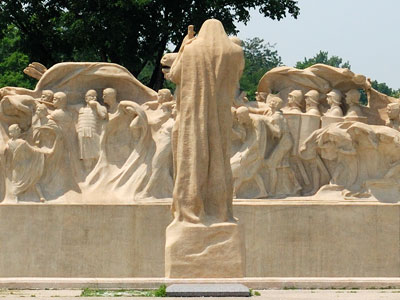
Photograph: Conrad LeeSculpture: Lorado Taft (1860-1936), Public domain, via Wikimedia Commons; Image Size Adjusted
Midway Plaisance
Chicago public park on the South Side of Chicago, Illinois, running through the southern portion of the University of Chicago campus
Millenium Park
Park located in the Loop community area of Chicago and features a variety of public art has become the number one tourist attraction in the Midwestern United States
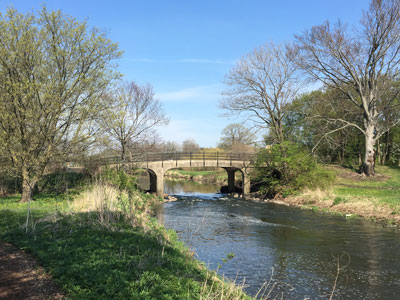
David Wilson, CC BY 2.0, via Wikimedia Commons; Image Size Adjusted
Morton Arboretum
Public garden, and outdoor museum covering 1,700 acres, includes cataloged collections of trees and other living plants, gardens, and restored areas
-400.jpg)
Leandro Neumann Ciuffo, CC BY 2.0, via Wikimedia Commons; Image Size Adjusted
Museum of Science and Industry
Science museum featuring over 2,000 exhibits, displayed in 75 major halls
-400.jpg)
Tony Hisgett from Birmingham, UK, CC BY 2.0, via Wikimedia Commons; Image Size Adjusted
Navy Pier
Over 50 acres of parks, gardens, shops, restaurants, family attractions and exhibition facilities and is one of the top destinations in the Midwestern United States

Daderot, CC0, via Wikimedia Commons; Image Size Adjusted
Oriental Institute Museum
Archaeology museum exhibiting an extensive collection of artifacts related to ancient civilizations

Matthew Dillon, CC BY 2.0, via Wikimedia Commons; Image Size Adjusted
Pullman National Monument
The first model, planned industrial community in the United States
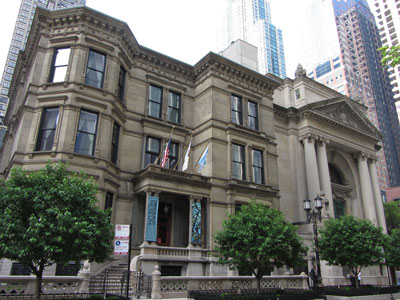
Richie Diesterheft, CC BY-SA 2.0, via Wikimedia Commons; Image Size Adjusted
Richard H Driehaus Museum
Museum displaying the prevailing design, architecture, and decorating tastes of Gilded Age America and the art nouveau era in permanent and special exhibitions
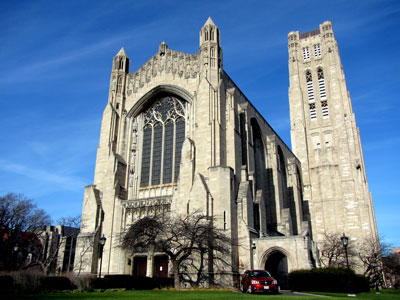
Bohao Zhao, CC BY 3.0, via Wikimedia Commons; Image Size Adjusted
Rockefeller Chapel
Gothic Revival chapel on the campus of the University of Chicago
-400.jpg)
Tony Hisgett from Birmingham, UK, CC BY 2.0, via Wikimedia Commons; Image Size Adjusted
Shedd Aquarium
Indoor public aquarium with its 5 million US gal aquarium was for some time the largest indoor facility in the world and today it holds about 32,000 animals
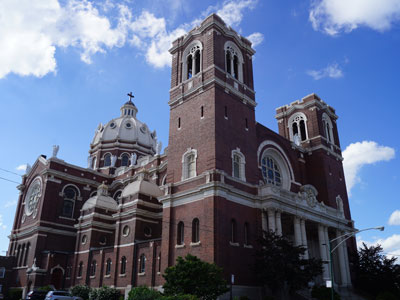
Goldnpuppy, CC BY-SA 4.0, via Wikimedia Commons; Image Size Adjusted
St Mary of Angels
Historic church is an example of the Polish Cathedral style of churches
-400.jpg)
Brian Crawford from Oak Park, IL, USA, CC BY-SA 2.0, via Wikimedia Commons; Image Size Adjusted
Unity Temple
Church designed by architect Frank Lloyd Wright, is considered to be one of Wright's most important structures dating from the first decade of the twentieth century
-400.jpg)
Joseph Gage from USA, CC BY-SA 2.0, via Wikimedia Commons; Image Size Adjusted
Waterfall Glen Forest Preserve
Forest preserve named for several waterfalls on Sawmill Creek as it empties into the Des Plaines River
-400.jpg)
Lydia Fizz from Vancouver, Canada, CC BY 2.0, via Wikimedia Commons; Image Size Adjusted
Wrigley Field
Major League Baseball (MLB) stadium located on the North Side of Chicago, Illinois and is the home of the Chicago Cubs
Chicago is the most populous city in Illinois, and the third most populous city in the United States, following New York City and Los Angeles. It is one of the 40 largest urban areas in the world.
Located on the shores of freshwater Lake Michigan, Chicago was incorporated as a city in 1837 near a portage between the Great Lakes and the Mississippi River watershed and grew rapidly in the mid-19th century. After the Great Chicago Fire of 1871, which destroyed several square miles and left more than 100,000 homeless, the city rebuilt. The construction boom accelerated population growth throughout the following decades, and by 1900, less than 30 years after the great fire, Chicago was the fifth-largest city in the world. Chicago made noted contributions to urban planning and zoning standards, including new construction styles (including the Chicago School of architecture), the development of the City Beautiful Movement, and the steel-framed skyscraper.
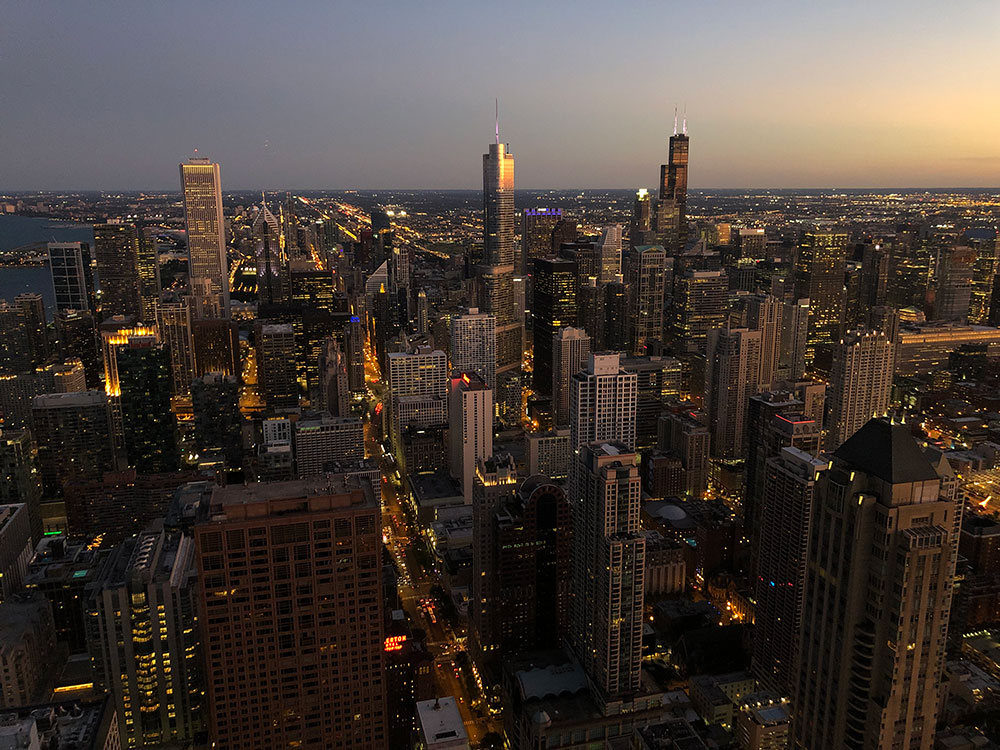
Chicago is an international hub for finance, culture, commerce, industry, education, technology, telecommunications, and transportation.
Chicago's 58 million tourist visitors in 2018 set a new record, and Chicago has been voted the best large city in the U.S. for four years in a row by Condé Nast Traveler. The city was ranked first in the 2018 Time Out City Life Index, a global urban quality of life survey of 15,000 people in 32 cities, and was rated second most beautiful city in the world (after Prague) in 2021. Landmarks in the city include Millennium Park, Navy Pier, the Magnificent Mile, the Art Institute of Chicago, Museum Campus, the Willis (Sears) Tower, Grant Park, the Museum of Science and Industry, and Lincoln Park Zoo. Chicago has professional sports teams in each of the major professional leagues, including two Major League Baseball teams.
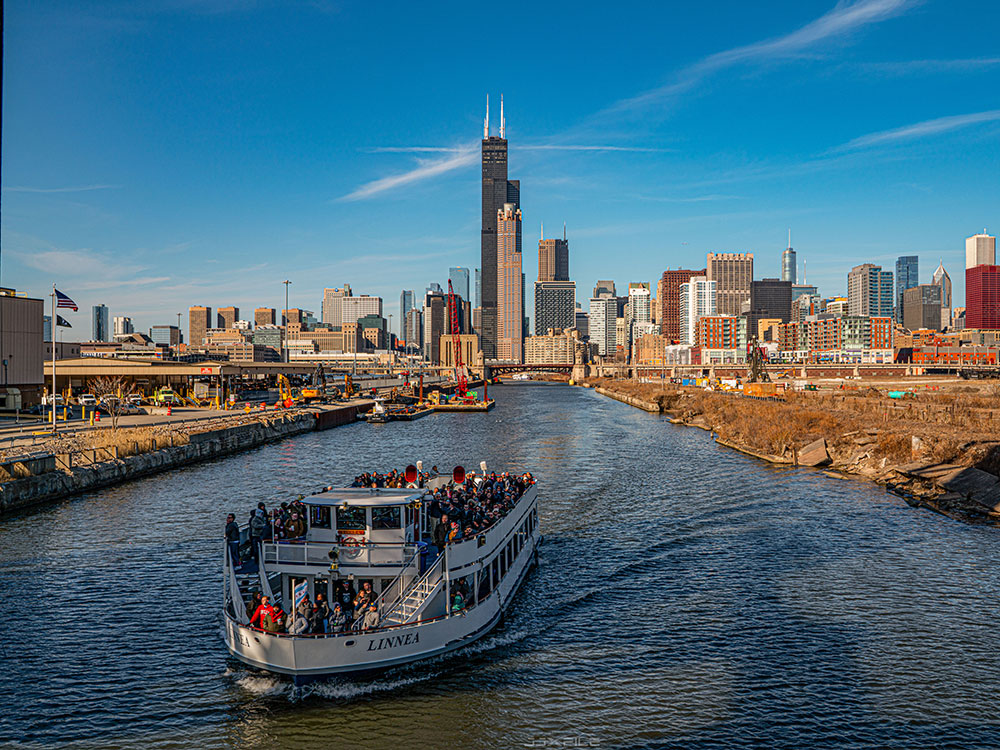
The name Chicago is derived from a French rendering of the indigenous Miami-Illinois word shikaakwa for a wild relative of the onion; it is known to botanists as Allium tricoccum and known more commonly as "ramps." The first known reference to the site of the current city of Chicago as "Checagou" was by Robert de LaSalle around 1679 in a memoir.
The city has had several nicknames throughout its history, such as the Windy City, Chi-Town, Second City, and City of the Big Shoulders.
In addition to it lying beside Lake Michigan, two rivers—the Chicago River in downtown and the Calumet River in the industrial far South Side—flow either entirely or partially through the city.
Chicago's history and economy are closely tied to its proximity to Lake Michigan. While the Chicago River historically handled much of the region's waterborne cargo, today's huge lake freighters use the city's Lake Calumet Harbor on the South Side. The lake also provides another positive effect: moderating Chicago's climate, making waterfront neighborhoods slightly warmer in winter and cooler in summer.
-1000.jpg)
While the Chicago Loop is the central business district, Chicago is also a city of neighborhoods. Lake Shore Drive runs adjacent to a large portion of Chicago's waterfront. Some of the parks along the waterfront include Lincoln Park, Grant Park, Burnham Park, and Jackson Park. There are 24 public beaches across 26 miles (42 km) of the waterfront. Landfill extends into portions of the lake providing space for Navy Pier, Northerly Island, the Museum Campus, and large portions of the McCormick Place Convention Center. Most of the city's high-rise commercial and residential buildings are close to the waterfront.
An informal name for the entire Chicago metropolitan area is "Chicagoland", which generally means the city and all its suburbs. The Chicago Tribune, which coined the term, includes the city of Chicago, the rest of Cook County, and eight nearby Illinois counties: Lake, McHenry, DuPage, Kane, Kendall, Grundy, Will and Kankakee, and three counties in Indiana: Lake, Porter and LaPorte. The Illinois Department of Tourism defines Chicagoland as Cook County without the city of Chicago, and only Lake, DuPage, Kane, and Will counties.
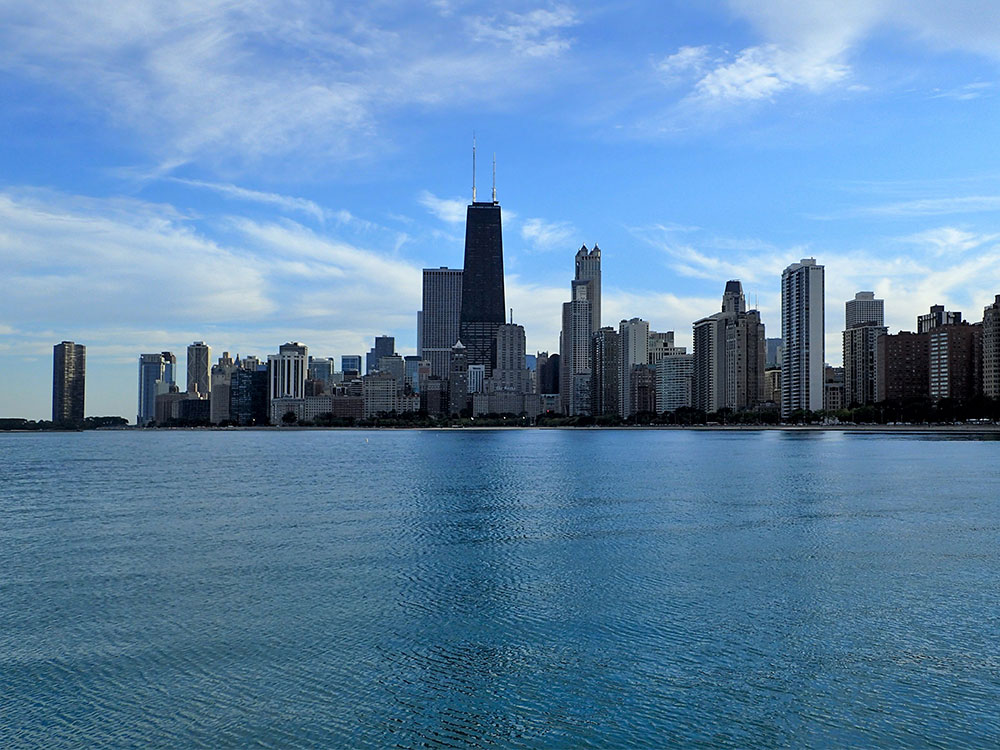
The destruction caused by the Great Chicago Fire led to the largest building boom in the history of the nation. In 1885, the first steel-framed high-rise building, the Home Insurance Building, rose in the city as Chicago ushered in the skyscraper era, which would then be followed by many other cities around the world. Today, Chicago's skyline is among the world's tallest and densest.
Some of the United States' tallest towers are located in Chicago; Willis Tower (formerly Sears Tower) is the second tallest building in the Western Hemisphere after One World Trade Center, and Trump International Hotel and Tower is the third tallest in the country. The Loop's historic buildings include the Chicago Board of Trade Building, the Fine Arts Building, 35 East Wacker, and the Chicago Building, 860-880 Lake Shore Drive Apartments by Mies van der Rohe. Many other architects have left their impression on the Chicago skyline such as Daniel Burnham, Louis Sullivan, Charles B. Atwood, John Root, and Helmut Jahn.
Chicago gave its name to the Chicago School and was home to the Prairie School, two movements in architecture. Multiple kinds and scales of houses, townhouses, condominiums, and apartment buildings can be found throughout Chicago. Large swaths of the city's residential areas away from the lake are characterized by brick bungalows built from the early 20th century through the end of World War II. Chicago is also a prominent center of the Polish Cathedral style of church architecture. The Chicago suburb of Oak Park was home to famous architect Frank Lloyd Wright, who had designed The Robie House located near the University of Chicago.
A popular tourist activity is to take an architecture boat tour along the Chicago River.
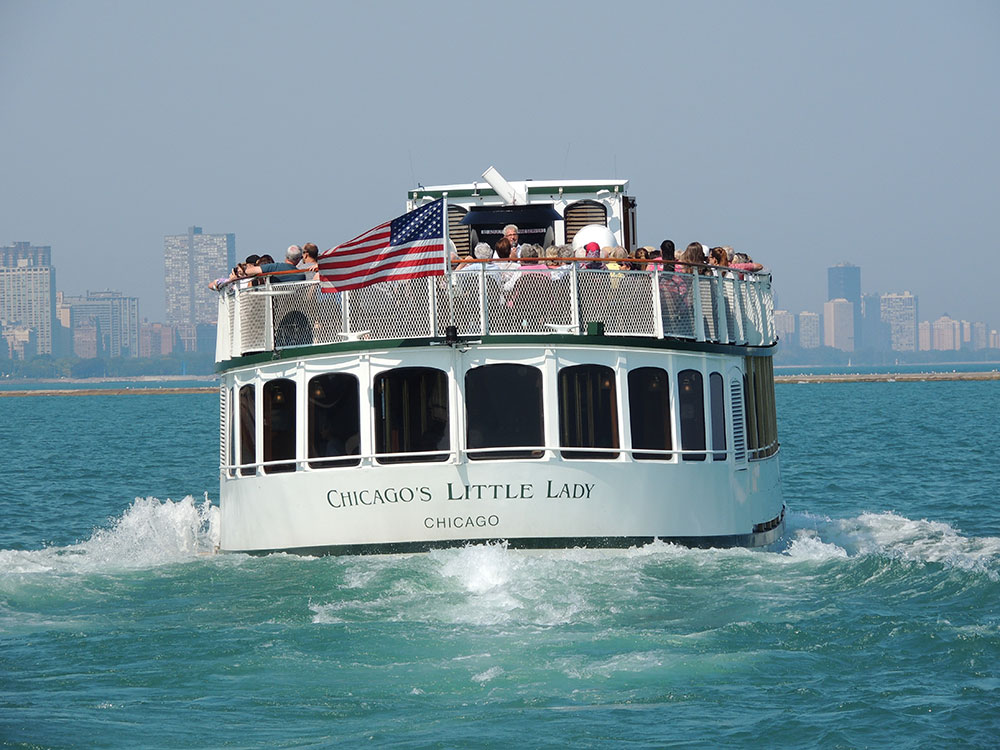
Chicago is famous for its outdoor public art with donors establishing funding for such art as far back as Benjamin Ferguson's 1905 trust. A number of Chicago's public art works are by modern figurative artists. Among these are Chagall's Four Seasons; the Chicago Picasso; Miro's Chicago; Calder's Flamingo; Oldenburg's Batcolumn; Moore's Large Interior Form, 1953-54, Man Enters the Cosmos and Nuclear Energy; Dubuffet's Monument with Standing Beast, Abakanowicz's Agora; and, Anish Kapoor's Cloud Gate which has become an icon of the city. Some events which shaped the city's history have also been memorialized by art works, including the Great Northern Migration (Saar) and the centennial of statehood for Illinois. Finally, two fountains near the Loop also function as monumental works of art: Plensa's Crown Fountain as well as Burnham and Bennett's Buckingham Fountain.
More representational and portrait statuary includes a number of works by Lorado Taft (Fountain of Time, The Crusader, Eternal Silence, and the Heald Square Monument completed by Crunelle), French's Statue of the Republic, Edward Kemys's Lions, Saint-Gaudens's Abraham Lincoln: The Man (a.k.a. Standing Lincoln) and Abraham Lincoln: The Head of State (a.k.a. Seated Lincoln), Brioschi's Christopher Columbus, Meštrović's The Bowman and The Spearman, Dallin's Signal of Peace, Fairbanks's The Chicago Lincoln, Boyle's The Alarm, Polasek's memorial to Masaryk, memorials along Solidarity Promenade to Kościuszko, Havliček and Copernicus by Chodzinski, Strachovský, and Thorvaldsen, a memorial to General Logan by Saint-Gaudens, and Kearney's Moose (W-02-03). A number of statues also honor recent local heroes such as Michael Jordan (by Amrany and Rotblatt-Amrany), Stan Mikita, and Bobby Hull outside of the United Center; Harry Caray (by Amrany and Cella) outside Wrigley field, Jack Brickhouse (by McKenna) next to the WGN studios, and Irv Kupcinet at the Wabash Avenue Bridge.
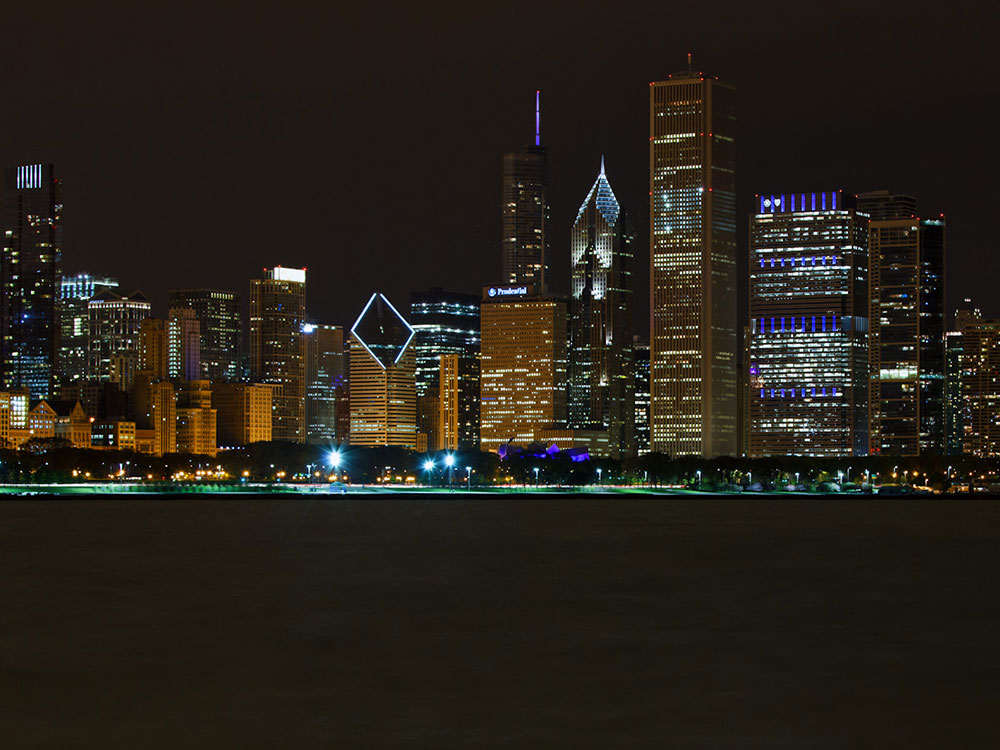
The city's waterfront location and nightlife has attracted residents and tourists alike. Over a third of the city population is concentrated in the lakefront neighborhoods from Rogers Park in the north to South Shore in the south. The city has many upscale dining establishments as well as many ethnic restaurant districts. These districts include the Mexican American neighborhoods, such as Pilsen along 18th street, and La Villita along 26th Street; the Puerto Rican enclave of Paseo Boricua in the Humboldt Park neighborhood; Greektown, along South Halsted Street, immediately west of downtown; Little Italy, along Taylor Street; Chinatown in Armour Square; Polish Patches in West Town; Little Seoul in Albany Park around Lawrence Avenue; Little Vietnam near Broadway in Uptown; and the Desi area, along Devon Avenue in West Ridge.
Downtown is the center of Chicago's financial, cultural, governmental and commercial institutions and the site of Grant Park and many of the city's skyscrapers. Many of the city's financial institutions, such as the CBOT and the Federal Reserve Bank of Chicago, are located within a section of downtown called "The Loop", which is an eight-block by five-block area of city streets that is encircled by elevated rail tracks. The term "The Loop" is largely used by locals to refer to the entire downtown area as well. The central area includes the Near North Side, the Near South Side, and the Near West Side, as well as the Loop. These areas contribute famous skyscrapers, abundant restaurants, shopping, museums, a stadium for the Chicago Bears, convention facilities, parkland, and beaches.
Lincoln Park contains the Lincoln Park Zoo and the Lincoln Park Conservatory. The River North Gallery District features the nation's largest concentration of contemporary art galleries outside of New York City.
Lakeview is home to Boystown, the city's large LGBT nightlife and culture center. The Chicago Pride Parade, held the last Sunday in June, is one of the world's largest with over a million people in attendance. North Halsted Street is the main thoroughfare of Boystown.
The South Side neighborhood of Hyde Park is the home of former US President Barack Obama. It also contains the University of Chicago, ranked one of the world's top ten universities, and the Museum of Science and Industry. The 6-mile (9.7 km) long Burnham Park stretches along the waterfront of the South Side. Two of the city's largest parks are also located on this side of the city: Jackson Park, bordering the waterfront, hosted the World's Columbian Exposition in 1893, and is the site of the aforementioned museum; and slightly west sits Washington Park. The two parks themselves are connected by a wide strip of parkland called the Midway Plaisance, running adjacent to the University of Chicago. The South Side hosts one of the city's largest parades, the annual African American Bud Billiken Parade and Picnic, which travels through Bronzeville to Washington Park. Ford Motor Company has an automobile assembly plant on the South Side in Hegewisch, and most of the facilities of the Port of Chicago are also on the South Side.
The West Side holds the Garfield Park Conservatory, one of the largest collections of tropical plants in any U.S. city. Prominent Latino cultural attractions found here include Humboldt Park's Institute of Puerto Rican Arts and Culture and the annual Puerto Rican People's Parade, as well as the National Museum of Mexican Art and St. Adalbert's Church in Pilsen. The Near West Side holds the University of Illinois at Chicago and was once home to Oprah Winfrey's Harpo Studios, the site of which has been rebuilt as the global headquarters of McDonald's.
-1000.jpg)
Upscale shopping along the Magnificent Mile and State Street, thousands of restaurants, as well as Chicago's eminent architecture, continue to draw tourists. The city is the United States' third-largest convention destination. The historic Chicago Cultural Center (1897), originally serving as the Chicago Public Library, now houses the city's Visitor Information Center, galleries and exhibit halls. The ceiling of its Preston Bradley Hall includes a 38-foot (12 m) Tiffany glass dome. Grant Park holds Millennium Park, Buckingham Fountain (1927), and the Art Institute of Chicago. The park also hosts the annual Taste of Chicago festival. In Millennium Park, the reflective Cloud Gate public sculpture by artist Anish Kapoor is the centerpiece of the AT&T Plaza in Millennium Park. Also, an outdoor restaurant transforms into an ice rink in the winter season. Two tall glass sculptures make up the Crown Fountain. The fountain's two towers display visual effects from LED images of Chicagoans' faces, along with water spouting from their lips. Frank Gehry's detailed, stainless steel band shell, the Jay Pritzker Pavilion, hosts the classical Grant Park Music Festival concert series. Behind the pavilion's stage is the Harris Theater for Music and Dance, an indoor venue for mid-sized performing arts companies, including the Chicago Opera Theater and Music of the Baroque.
Navy Pier, located just east of Streeterville, is 3,000 ft (910 m) long and houses retail stores, restaurants, museums, exhibition halls and auditoriums. In the summer of 2016, Navy Pier constructed a DW60 Ferris wheel. It features 42 navy blue gondolas that can hold up to eight adults and two children. It also has entertainment systems inside the gondolas as well as a climate controlled environment. The DW60 stands at approximately 196 ft (60 m), which is 46 feet (14 m) taller than the previous wheel. The new DW60 is the first in the United States and is the sixth tallest in the U.S.
On June 4, 1998, the city officially opened the Museum Campus, a 10-acre (4 ha) lakefront park, surrounding three of the city's main museums, each of which is of national importance: the Adler Planetarium & Astronomy Museum, the Field Museum of Natural History, and the Shedd Aquarium. The Museum Campus joins the southern section of Grant Park, which includes the renowned Art Institute of Chicago. Buckingham Fountain anchors the downtown park along the lakefront. The University of Chicago Oriental Institute has an extensive collection of ancient Egyptian and Near Eastern archaeological artifacts. Other museums and galleries in Chicago include the Chicago History Museum, the Driehaus Museum, the DuSable Museum of African American History, the Museum of Contemporary Art, the Peggy Notebaert Nature Museum, the Polish Museum of America, the Museum of Broadcast Communications, the Pritzker Military Library, the Chicago Architecture Foundation, and the Museum of Science and Industry.
The Willis Tower (formerly named Sears Tower) is a popular destination for tourists. The Willis Tower has an observation deck open to tourists year round with high up views overlooking Chicago and Lake Michigan. The observation deck includes an enclosed glass balcony that extends 10 feet (3 m) out on the side of the building. Tourists are able to look straight down.
Chicago lays claim to a large number of regional specialties that reflect the city's ethnic and working-class roots. Included among these are its nationally renowned deep-dish pizza; this style is said to have originated at Pizzeria Uno. The Chicago-style thin crust is also popular in the city. Certain Chicago pizza favorites include Lou Malnati's and Giordano's.
The Chicago-style hot dog, typically an all-beef hot dog, is loaded with an array of toppings that often includes pickle relish, yellow mustard, pickled sport peppers, tomato wedges, dill pickle spear and topped off with celery salt on a poppy seed bun.
A distinctly Chicago sandwich, the Italian beef sandwich is thinly sliced beef simmered in au jus and served on an Italian roll with sweet peppers or spicy giardiniera. A popular modification is the Combo—an Italian beef sandwich with the addition of an Italian sausage. The Maxwell Street Polish is a grilled or deep-fried kielbasa—on a hot dog roll, topped with grilled onions, yellow mustard, and hot sport peppers.
Chicken Vesuvio is roasted bone-in chicken cooked in oil and garlic next to garlicky oven-roasted potato wedges and a sprinkling of green peas. The Puerto Rican-influenced jibarito is a sandwich made with flattened, fried green plantains instead of bread. The mother-in-law is a tamale topped with chili and served on a hot dog bun. The tradition of serving the Greek dish saganaki while aflame has its origins in Chicago's Greek community. The appetizer, which consists of a square of fried cheese, is doused with Metaxa and flambéed table-side. Annual festivals feature various Chicago signature dishes, such as Taste of Chicago and the Chicago Food Truck Festival.
One of the world's most decorated restaurants and a recipient of three Michelin stars, Alinea is located in Chicago.
The city has two Major League Baseball (MLB) teams: the Chicago Cubs of the National League play in Wrigley Field on the North Side; and the Chicago White Sox of the American League play in Guaranteed Rate Field on the South Side. The Chicago Bears, one of the last two remaining charter members of the National Football League (NFL), have won nine NFL Championships, including the 1985 Super Bowl XX. The Chicago Bulls of the National Basketball Association (NBA) is one of the most recognized basketball teams in the world. During the 1990s, with Michael Jordan leading them, the Bulls won six NBA championships in eight seasons. The Chicago Blackhawks of the National Hockey League (NHL) began play in 1926, and are one of the "Original Six" teams of the NHL. Chicago Fire FC is a member of Major League Soccer (MLS) and plays at Soldier Field. The Chicago Sky is a professional basketball team playing in the Women's National Basketball Association (WNBA). They play home games at the Wintrust Arena.
When Chicago was incorporated in 1837, it chose the motto Urbs in Horto, a Latin phrase which means "City in a Garden". Today, the Chicago Park District consists of more than 570 parks with over 8,000 acres (3,200 ha) of municipal parkland. There are 31 sand beaches, a plethora of museums, two world-class conservatories, and 50 nature areas. Lincoln Park, the largest of the city's parks, covers 1,200 acres (490 ha) and has over 20 million visitors each year, making it third in the number of visitors after Central Park in New York City, and the National Mall and Memorial Parks in Washington, D.C.
Washington Park is also one of the city's biggest parks; covering nearly 400 acres (160 ha). The park is listed on the National Register of Historic Places listings in South Side Chicago.
This article uses material from the Wikipedia article "Chicago", which is released under the Creative Commons Attribution-Share-Alike License 3.0
-400.jpg)